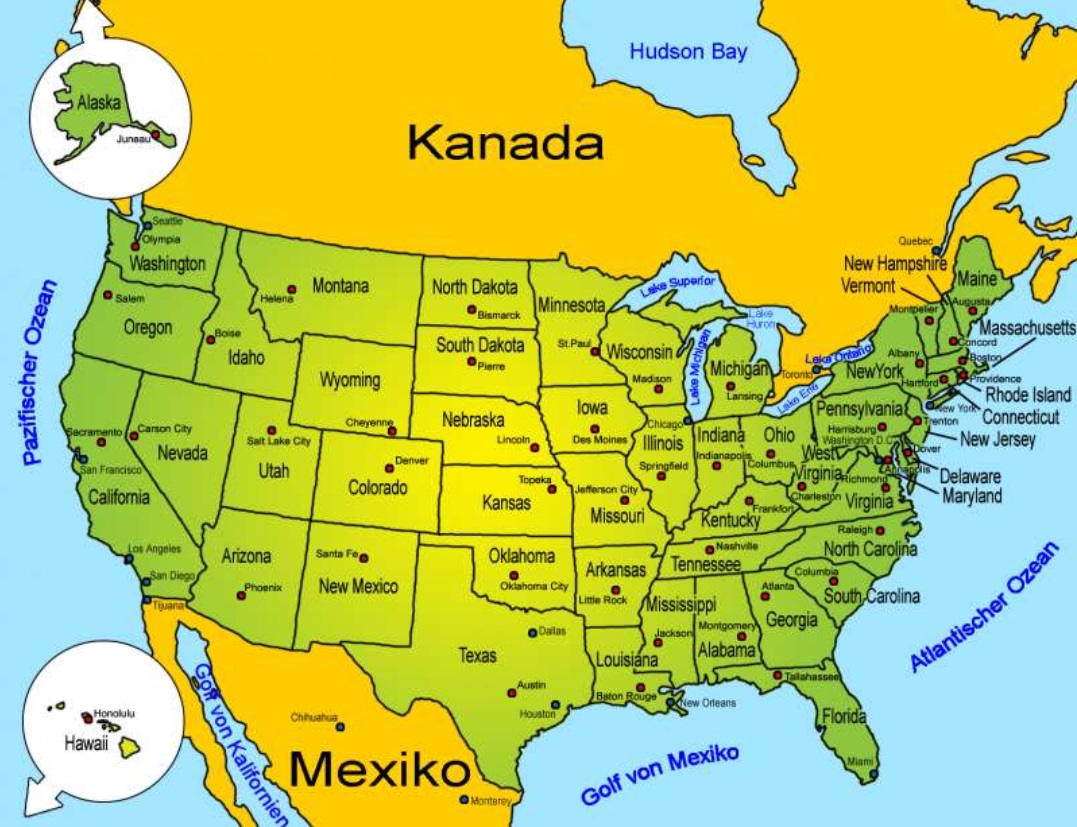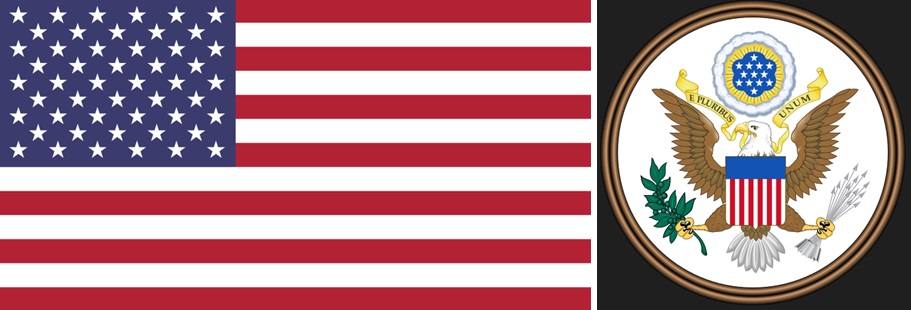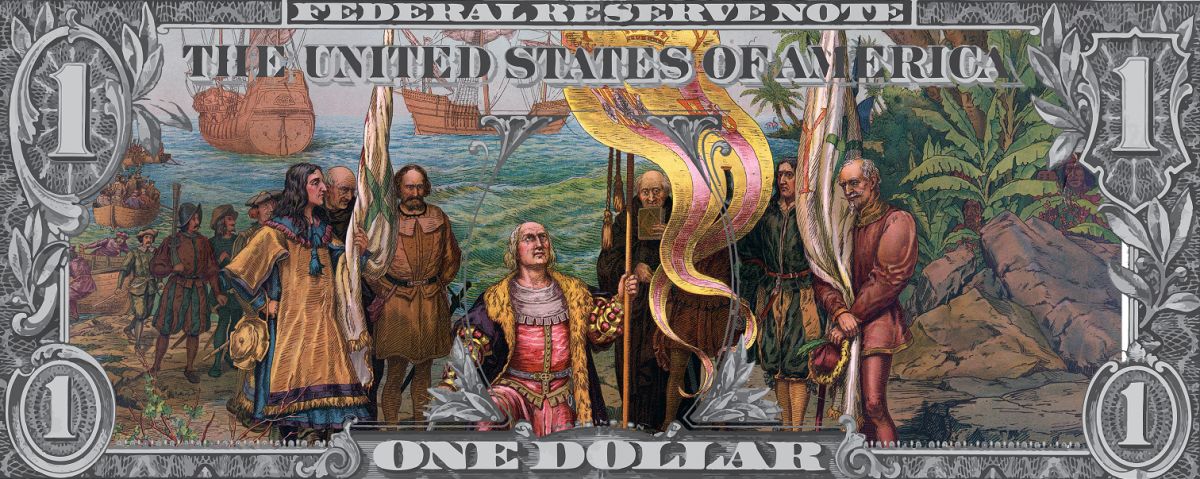The United States of America, often referred to colloquially as America; see USA.
USA
The United States of America (USA) covers 9,525,067 km², which corresponds to around 6.5% of the Earth's land area, and has 340 million inhabitants. The state comprises almost 40% of the subcontinent of North America as well as the Hawaiian Island chain in the Pacific Ocean. It consists of 50 states with the capital Washington D.C. (not to be confused with the state of Washington), as well as the external territories (US sovereignty) of the US Virgin Islands and Puerto Rico (Caribbean), and American Oceania (islands and atolls in the Pacific; the three largest are American Samoa, Guam and the Northern Mariana Islands). The contiguous "Lower 48" (Contiguous United States) together with Alaska, from which they are separated by Canadian territory, form the Continental United States. Hawaii and some smaller outlying areas are located in the Pacific and the Caribbean.

US states
The 50 states are Alabama, Alaska, Arizona, Arkansas, Colorado, Connecticut, Deleware, Florida, Georgia, Hawaii, Idaho, Illinois, Indiana, Iowa, California, Kansas, Kentucky, Louisiana, Maine, Maryland, Massachusetts, Michigan, Minnesota, Mississippi, Missouri, Montana, Nebraska, Nevada, New Hampshire, New Jersey, New Mexico, New York, North Carolina, North Dakota, Ohio, Oklahoma, Oregon, Pennsylvania, Rhode Island, South Carolina, South Dakota, Tennessee, Texas, Utah, Vermont, Virginia, Washington, West Virginia, Wisconsin and Wyoming.

History
On Friday, 12 October 1492, an unnamed sailor sighted land from the Spanish caravel "Pinta" at 2.00 am. It was the Bahamas island of Guanahani, the name in the indigenous language at the time (as it is called again today), which Christopher Columbus (1451-1506) called San Salvador (Holy Saviour, Saviour). This is still regarded as the day of the discovery of America and the New World.
But 500 years before Columbus, someone else had already set foot on the American continent. Around the year 1000, the Icelandic Viking Leif Eriksson (son of the Greenland explorer Erik the Red) travelled south from Greenland and reached the American coast. He called the area "Vinland". Whether the name actually means Vinland "wine country" is not certain, it could also have meant "pasture" or "grazing land" or "meadow". There have been many attempts to identify the exact location; one version names the island of Manhattan on the site of New York, another a location near the present-day city of Boston in the state of Massachusetts.

The US historian Frederick J. Pohl (1889-1991) writes in his book "The lost discovery" that it was - a little further north - Massachusetts Bay on the site of Boston. According to a written account - the Grenlinga saga (saga of the Greenlanders) - Leif Eriksson found rolling hills, numerous game, salmon, wild wheat and, in the forests, masses of wild grapes with berries of enormous size hanging from the trees. One sailor left some grapes lying around until they began to ferment and was found drunk. Leif's brother-in-law Thorfinn Karlsefni then tried to establish a settlement, but due to fierce resistance from the natives, who resembled Indians or Eskimos, colonisation had to be abandoned after a few years.
Colonisation of America
When the first colonists landed on the east coast of America towards the end of the 16th century, they made the same discovery as Eriksson. Grapes with huge fruits grew in the forests. But for the most part, the wild vines could not be used to produce tasty wine. This is because American vines, particularly of the Vitis labrusca species, produce a wine with an unpleasant foxy or penetrating strawberry flavour. For this reason, grape varieties introduced from Europe were soon tried along the entire Atlantic coast from Massachusetts in the north to Florida in the far south. But these soon died after planting.
The American soil was literally saturated with phylloxera and was also plagued by mildew, which was unknown in Europe, other diseases and extreme climatic conditions. Many of the American vines were resistant to these plagues thanks to millions of years of adaptation, but the European vines were defenceless against them. The causes were not recognised for over 200 years and were only clarified when phylloxera and...
Voices of our members

As honorary chairman of the Domäne Wachau, it is the easiest and quickest way for me to access the wein.plus encyclopaedia when I have questions. The certainty of receiving well-founded and up-to-date information here makes it an indispensable guide.
Hans-Georg Schwarz
Ehrenobmann der Domäne Wachau (Wachau)